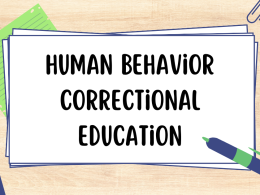In today’s digital age, social media has become a powerful tool for communication and connection. However, this same power can also be harnessed to shame and bully individuals on a public platform. With the rise of cancel culture and online call-outs, it seems like no one is safe from being publicly shamed on social media. In this blog post, we’ll take a closer look at the impact of social media on public shaming and examine some recent high-profile cases where media superstars faced the wrath of their online audience. Join us as we delve into the complex world of social media shaming!
What is social media shaming?
Social media shaming refers to the act of publicly calling out and criticizing individuals or organizations on social media platforms. It can take various forms, such as exposing someone’s misdeeds, highlighting their problematic behavior, or mocking them for their mistakes.
One of the defining characteristics of social media shaming is its public nature. Unlike traditional forms of criticism that are typically directed at a specific person or organization, social media shaming takes place in front of an audience that often spans across borders and time zones.
Another key feature of social media shaming is its ability to spread rapidly and widely. With just one click, a post can be shared with thousands or even millions of people within minutes.
While some argue that social media shaming serves as an important tool for holding individuals and organizations accountable for their actions, others worry about the potential harms it may inflict on those who are targeted. The debate around this controversial phenomenon continues to rage on as we grapple with the complexities and consequences associated with calling out bad behavior online.
The history of public shaming
Throughout history, public shaming has been a common form of punishment for those who have committed crimes or violated societal norms. In ancient times, individuals were often publicly punished in the town square as a way to deter others from committing similar offenses.
In medieval Europe, stocks and pillories were commonly used for public shaming. These devices restrained an individual’s head and hands so that they could be ridiculed by passersby or even physically harmed.
Public shaming continued into the modern era, with newspapers publishing lists of individuals who had been arrested for various crimes. This practice was intended to shame these people and warn others not to engage in similar behavior.
However, public opinion on shaming began to shift during the 20th century as society became more focused on individual rights and privacy concerns. Today, many people view public shaming as cruel and unnecessary, especially when it takes place online through social media platforms.
Despite this changing attitude toward public shaming, it still remains a controversial topic in today’s society. Some argue that certain individuals deserve to be publicly called out for their actions while others believe that such practices are harmful and counterproductive.
The impact of social media on public shaming
The advent of social media has forever changed the landscape of public shaming. With millions of users on various platforms, it’s easier than ever for people to participate in online harassment and join virtual mobs against individuals or groups they disagree with.
One major impact of social media on public shaming is that it amplifies the reach and speed at which shame can spread. A single tweet or post can quickly go viral, leading to a large scale backlash that may have previously taken weeks or months to achieve through traditional media channels.
Moreover, the anonymity provided by social media makes it easier for people to engage in aggressive and abusive behavior without fear of repercussion. The lack of accountability also means that false accusations can be made without any consequences, causing significant harm to innocent individuals.
Social media shaming also impacts mental health as victims often experience anxiety, depression, and even suicidal thoughts due to relentless cyberbullying. It affects their personal relationships, professional reputation and overall wellbeing in ways that are difficult to quantify.
While social media has undoubtedly revolutionized our communication capabilities, its effects on public shaming cannot be ignored. We must continue discussing how we can use these powerful tools responsibly rather than using them as weapons against each other.
The different types of social media shaming
Social media shaming is a type of public shaming that happens on various social media platforms. It can be divided into two broad categories: personal and professional.
Personal social media shaming involves attacking an individual for their views, opinions or actions. This kind of shaming can happen to anyone, from celebrities to ordinary people. The attacks are often vicious and may include name-calling, insults and threats.
Professional social media shaming targets individuals in positions of power or authority, such as politicians or business leaders. These types of attacks are aimed at exposing wrongdoings like corruption or unethical behavior.
Another type of social media shaming is body-shaming which targets individuals based on their physical appearance. This form of bullying can have severe consequences for the victim’s mental health.
Cancel culture is also a form of social media shaming where groups call for boycotts against companies deemed problematic or individuals who made controversial statements.
There are many forms of social media shaming that can have devastating effects on the victims involved. It’s important to remember that words have power and we should always strive to use them responsibly online.
The case study: Facebook bullying
One of the most notable examples of social media shaming is Facebook bullying. With over 2.8 billion users worldwide, Facebook has become a breeding ground for online harassment and abuse.
In recent years, there have been numerous high-profile cases of Facebook bullying that have garnered widespread media attention. Victims of such cyberbullying often suffer from anxiety, depression, and even suicidal thoughts as a result of the relentless attacks on their character.
It’s not just individuals who fall victim to Facebook bullying either; businesses and public figures are also targeted by online trolls who use the platform to defame or discredit them with false accusations or rumors.
Facebook has taken steps to combat this issue through its community standards policy which prohibits hate speech, harassment, and other forms of abusive behavior. However, enforcement can be challenging due to the sheer volume of content posted daily on the site.
Ultimately, it’s up to each individual user to take responsibility for their actions on social media platforms like Facebook and strive towards creating a more positive digital space where everyone can feel safe and respected.
Conclusion
Social media has undoubtedly transformed the way public shaming takes place. It has given a voice to those who were previously silenced and made it easier for individuals to band together in order to hold others accountable. However, it is clear that there are negative consequences associated with this phenomenon as well.
As we have seen from the case study of Facebook bullying and other examples throughout history, social media shaming can quickly spiral out of control and lead to serious harm for all involved parties. Therefore, it is important that we approach these situations with empathy and understanding rather than simply joining in on the mob mentality.
Moving forward, we must strive to use social media platforms responsibly and thoughtfully. We should be mindful of our words and actions online just as much as we would be in person. By doing so, perhaps we can create a kinder, more compassionate society where public shaming no longer has a place.










